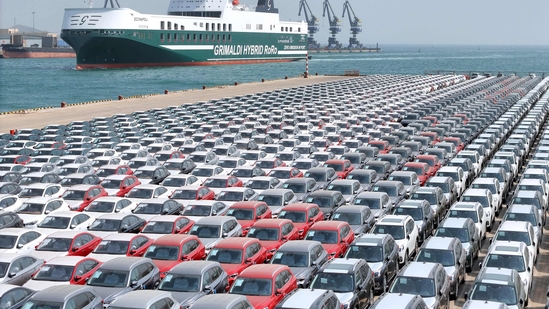New Delhi: Delhi saw its hottest day of the year on March 26, 2025, with the maximum temperature reaching a blistering 40.5°C — a whopping 6.3°C above normal. The India Meteorological Department (IMD) has predicted a warning of more severe heatwaves in the next several weeks, with northwest India likely to see almost double the normal number of heatwave days this summer.

Record-Breaking Heat
The March 26 temperature was the highest of 2025 until now, breaking the previous high of 37.1°C that was witnessed just a day ago. Rising temperatures have been blamed on fluctuating weather conditions and a high-pressure system settling over the north plains. As per IMD officials, such an early rise in temperature is not common and foretells an extended and severe summer to come.
“The temperature going over 40°C in March itself is alarming. Normally, the levels are attained only in April or May,” a senior IMD official said. “The dry westerly winds and clear skies have speeded up the heating process.”
Heatwave Warning Issued
IMD has forecast that the summer of 2025 will witness a substantial increase in the number of heatwave days in northwest India. Delhi and the surrounding areas witness an average of five to six heatwave days every year. But this year, weather experts anticipate between 10 to 12 heatwave days — almost twice the normal number.
The department has also cautioned people against prolonged exposure to direct sunlight, drinking plenty of water, and taking preventive measures to avoid heat-related ailments. Children, the elderly, and people with pre-existing illnesses have been warned to stay indoors during the hottest part of the day.
Humidity and Air Quality Concerns
With rising temperatures, the humidity in Delhi was between 19% and 52% on March 26, adding to the discomfort. The air quality index (AQI) of the capital also worsened to the “poor” category because of the dry winds transporting dust and pollutants from the neighboring areas.
Health professionals have cautioned that the high temperatures coupled with low air quality might cause an increase in dehydration, heatstroke, and respiratory conditions. “Individuals should take proper precautions, such as dressing in light clothing, remaining in the shade, and drinking plenty of fluids,” cautioned Dr. Rajiv Kumar, a health consultant.
Wider Impact Across North India
The heatwave is not exclusive to Delhi. Other regions of north and central India, such as Rajasthan, Haryana, Punjab, and Uttar Pradesh, have also seen increasing temperatures. Jaipur has recorded 39°C, and Lucknow has reached 38.5°C — both well above average.
IMD has predicted temperatures in the region to rise further in the coming week, with some places expected to reach 42°C. Authorities have asked state governments to arrange for public cooling shelters and provide sufficient water supply in urban and rural regions.
Conclusion
The premature advent of severe heat in Delhi portends a tough summer. IMD has urged greater public preparedness and awareness to deal with the increasing temperatures. As more heatwave days are predicted, authorities are emphasizing the necessity for proactive action to reduce health hazards and cope with the pressure on infrastructure and public health systems.
For comprehensive updates and weather warnings, log on to the official IMD website.








